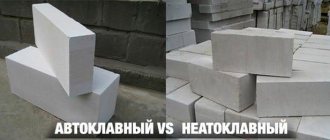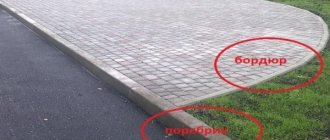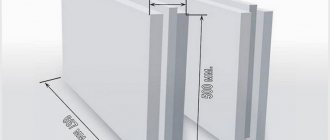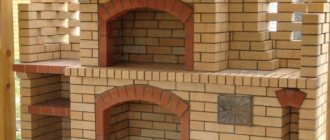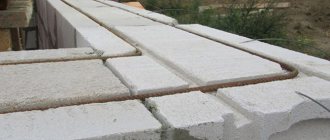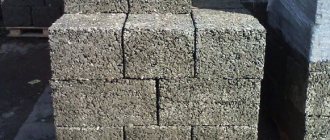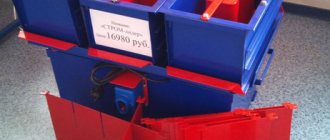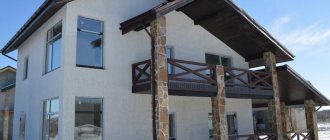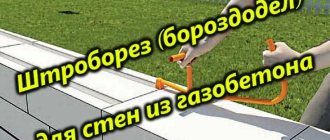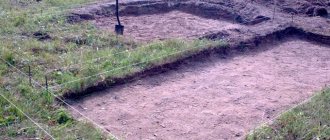Application area
The scope of application of this building material is quite extensive. On its basis, durable formwork is erected, lintels are prepared in the openings, armored belts and supports for attaching the rafter system are equipped.
In cross-section, the block looks like a kind of tray. After fixing the rods in the niche of the gutter, the concrete solution is poured. As it hardens, the strength properties of the structure increase.
Power belts are effective in uniformly distributing loads on openings and walls. A properly arranged belt gives the room additional rigidity.
U-shaped blocks made of aerated concrete also allow you to construct stationary formwork or create roof support elements.
Scope of application of u-shaped aerated concrete blocks
This type of building material is used to solve complex problems.
Formwork is constructed from it, and reliable opening lintels are made. In addition, the u-gas block is used in the construction of power belts, the formation of supports on which the rafter system will be installed, and the construction of an armored belt that reinforces the wall.
The cross-section of the block resembles a tray. When metal rods are placed in the gutter part, combining block stones into a single contour, and a solution is poured, the concrete mass, gradually hardening, gains operational strength.
The power belt is designed to uniformly distribute the load acting on opening areas and walls.
It should be noted that after pouring such a belt, the rigidity of the structure box increases significantly.
Specifications and Dimensions
Modern U-shaped blocks that are available on the market have one length, regardless of size. Their structure provides for the presence of a longitudinal cavity. Outwardly, they resemble a tray, where one wall has a slight thickening for fastening from the outside.
In Moscow you can purchase aerated concrete U-blocks with the following dimensions:
- Blocks can have widths of 20, 25, 28.8, 30, 36.5 and 40 cm.
- Height is 20 and 25 cm.
- Thickness indicators vary from 7 to 14.5 cm.
There are some standards by which product sizes are determined.
Installation Features
Y-shaped aerated concrete blocks are laid using a special adhesive base. In this case, the structure is pre-equipped with reinforced elements, placing them inside the gutter and filling them with concrete. The brand of mortar and the size of the rods are determined by the degree of load. After this, the cavity of the blocks is filled to the top edge.
Like jumpers
If it is necessary to construct a lintel using gas silicate blocks, you can use one of two methods:
- Fix the block horizontally and fill it with concrete. After the solution has hardened, the jumper must be lifted to its original place using special equipment.
- U-shaped blocks of aerated concrete can be placed in timber formwork secured over the opening. To strengthen the structure, metal reinforcement is used, which is filled with concrete mixture. After achieving the required strength properties, the formwork is dismantled.
When carrying out work, it is necessary to ensure that the base where the jumper is poured is placed correctly.
Armopoyas
U-blocks made of aerated concrete have found their application in the construction of attic floors. They allow you to remove the load from floor slabs or attics from load-bearing walls.
To install the last row, you need to follow these instructions:
- The blocks are fixed with glue or cement mixture. In this case, it is necessary to glue the joints and ensure the evenness of the surface.
- To construct a reinforcing frame, steel rods should be used and secured longitudinally with knitting wire.
- After this, you can proceed to laying the frame base into the gutter cavity. The main part of the rods should be placed at the bottom of the frame.
- Spacers are used to secure the frame. The inner walls need to be moistened.
- Next, the structure is poured with concrete, followed by removal of air bubbles.
- The surface is aligned to the level of the block plane.
Profile aerated concrete block - nuances of application
Special glue is used for masonry. The structure is reinforced with steel rods, which are located inside a trench filled with concrete mixture. The brand of concrete mixture used, as well as the range of reinforcement, are determined depending on the magnitude of the acting forces. The cavities are filled with concrete up to the top edge. After the final hardening of the concrete, the profile products form a monolithic structure with increased strength.
When using U-shaped aerated concrete blocks, follow these guidelines:
- Install the elements on the supporting surface after the concrete has reached its final operational strength. Concrete gains its final strength 4 weeks after pouring;
- the area of the supporting surface must cover the entire width of the products, including hardened concrete with reinforcement, and be at least 20 cm. It is prohibited to use the walls of the upper part of the gutter as a supporting plane.
The autoclave method for producing U-shaped gas blocks makes it possible to obtain products that are popular in the construction of buildings
A one-piece structure based on profile gas silicate elements is capable of absorbing significant forces, protecting the walls of the building from local destruction.
Gas-filled concrete also serves as a thermally insulated formwork. In order to increase the thermal insulation properties, a foam or polystyrene foam liner is placed inside the gutter. This allows you to increase the efficiency of thermal insulation, get rid of cold bridges, significantly reducing the level of heat loss.
How to make it yourself
Often craftsmen create u-shaped aerated concrete blocks with their own hands. This allows you not only to reduce costs, but also to gain useful experience that will be useful in future construction work. There are two options for manufacturing such structures: the formation of a classic ordinary block and the assembly of aerated concrete U-blocks from several elements.
Forming a classic ordinary block
The first option requires some effort and skill. You will also need to prepare a professional tool, draw up drawings and follow the sequence of actions:
- First of all, it is worth applying markings, taking into account the size and thickness of the wall.
- Next, 2 key cuts are made, on which the thickness of the walls will depend.
- At the next stage, you can make auxiliary cuts or holes for more convenient processing of the structure.
- Finally, the inside of the block is removed using a mason's hammer and the final shaping step is carried out.
Using this technology, you can make high-quality blocks of any size. For example, you can change the width of the outer wall to improve thermal conductivity.
The disadvantages of this option include high material costs. Processing fragile gas silicate also requires some skills.
Assembling a u-shape from several blocks of different thicknesses
Unlike the previous method, assembling Y-shaped blocks from several structures requires less physical effort and monetary costs. Builders just need to lay out blocks with a small thickness along the marked perimeter, guided by some principles and recommendations.
So, when producing products with a thickness of 375 mm, you will need simple products with parameters of 150 mm, 75 mm and 50 mm.
Installation is carried out directly on the construction site according to the following instructions:
- Blocks 150 mm thick are fixed on the outside using an adhesive base.
- After this, structures with a thickness of 75 mm are fixed. They need to be sawn off to a height of 175 mm and secured in a lying position with an adhesive compound. This is necessary to create the bottom of the U-shaped structure.
- At the end, it remains to fix the products at 50 mm.
After the glue has set, the strength properties of the structure will be increased to the factory level.
The key advantages of the method are accessibility and ease of production, since builders need to make 1 cut with a hacksaw on aerated concrete, but do not resort to molding measures.
The use of homemade structures justifies itself in different conditions. With their help you can create fences, permanent formwork and other building structures.
What are U-blocks
A U-block is a product made of aerated concrete, which is a small tray. The height and width of such an element are equal to the height and width of ordinary gas silicate blocks for masonry, and the length may differ. Typically, such a tray is made at a factory from a ready-made block by cutting out part of the material from the middle.
The density of aerated concrete from which the products are made is usually the same as that of ordinary blocks. If the masonry is made from structural aerated concrete D600 and higher, products with a density of no more than D500 are used for lintels.
Among the advantages inherent in such designs are the following:
- relatively low price;
- ease of construction;
- no need to use lifting machines and mechanisms;
- fairly high production speed;
- the possibility of laying the top rows immediately after installation.
The disadvantages of using U-blocks are not significant. Firstly, it is impossible to cover openings more than 2 m wide. Secondly, it is fragility, and therefore it is necessary to handle the products carefully before installation.
Advantages and disadvantages
Despite its non-standard shape, the U-gas block has many advantages. Among them are:
- Improved strength properties and long service life. These indicators are achieved through autoclave processing.
- Light weight. The advantage is due to the presence of hundreds of thousands of cells throughout the structure.
- Resistant to fire and no problem of release of toxic substances when exposed to extreme temperatures.
- Excellent thermal insulation properties. They are provided by the cellular structure of the material.
- Compliance with all environmental safety standards. The blocks contain safe components of natural origin. These include: water, cement, lime and sand.
- Correct geometry, reducing the size of the joints between each product.
- Increased sound insulation properties, since the porous material absorbs sound wave energy.
- Low water permeability due to closed cells.
Due to many advantages, such products occupy leading positions in the list of the most popular building materials.
In addition to the advantages, the designs also have disadvantages. First of all, walls made of U-shaped aerated blocks require double primer treatment, since such a mixture does not adhere well to the surface. In this case, it is impossible to use simple plaster for finishing, because... it will fall off quickly. It is replaced with a deep penetration primer.
The material cannot provide a good degree of fixation of fasteners. Condensation can accumulate in the porous structure, which leads to the appearance of cracks and deformations.
When fixing household appliances (TVs and air conditioners), various difficulties may arise, which is due to the specific shape and structure of the material.
If the basic rules were not followed during the production of stone, it will be problematic to create high-quality material based on it.
Production and acquisition of blocks
To realize the independent production of U-blocks, you must follow the step-by-step instructions and not deviate from the technology. If you want to purchase a store-bought product, you need to pay attention to:
- Shade of the material. A high-quality stone is white in color, which indicates the use of autoclave manufacturing technology. The gray shade demonstrates the styling in artisanal conditions.
- Documentation and quality certificates. Leading manufacturers provide customers with all documents confirming the good quality of the products offered.
When choosing a material, you need to take into account all the nuances and criteria, since they determine the correctness of the purchase.
